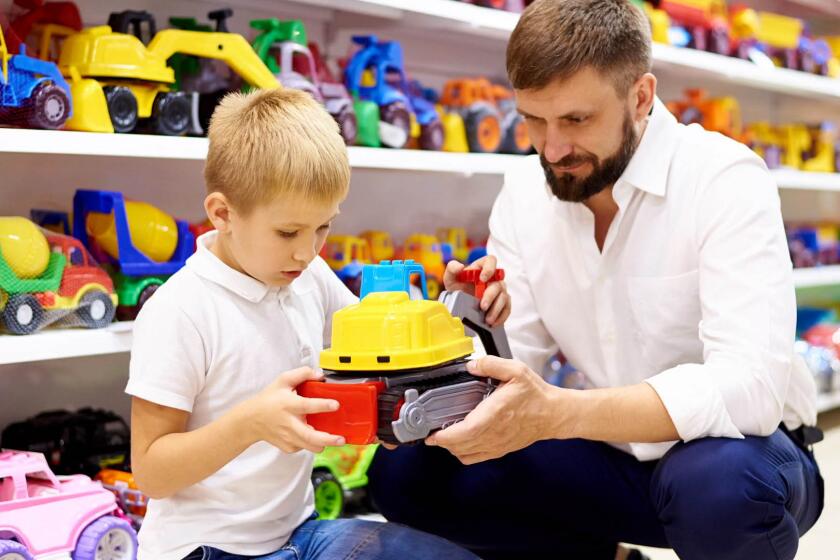Column: The latest scare tactic to rile the GOP base? The word ‘groomer’

- Share via
Why is the GOP so hellbent on linking discussions about sexual preference and gender identity to pedophilia and child molestation?
And why has the party embraced the word “groomer” as a slur for people who think it’s important for educators to be able to talk about those issues at school, even with young kids.
The simple answer, of course, is that it’s a scare tactic to rile the base and raise money.
“When did our public schools, any schools, become what are essentially grooming centers for gender-identity radicals?” Fox News host Laura Ingraham asked last month.
In an email blast Tuesday morning, attorney and former California Republican Party official Harmeet Dhillon pleaded for money to fund a lawsuit against a small California school district and two teachers who, she claims, “indoctrinated” a sixth-grader into believing she was transgender and bisexual.
“We’ll hold these teachers accountable for brainwashing and grooming their young students,” Dhillon vowed.
In an article about what the Washington Post has dubbed “groomer discourse,” Vice News earlier this month interviewed Terry Schilling, president of the conservative American Principles Project, who defended the misuse of the word.
“Maybe it’s a little bit different from a pedophile specifically grooming a child for their own sexual gratification, but this is a form of grooming. ... Grooming children to be sexually active at the youngest ages,” Schilling said, “And it’s crazy to me.”
What a perverse and cynical misuse of a word that, in the context of child sexual abuse, has a real meaning, which has nothing to do with frank discussions about sexuality and gender.
“There’s a blurring of all this, and an impugning of LGBTQ activity,” said Kenneth Lanning, a retired FBI child sex crimes expert who is credited with popularizing the concept of grooming over the course of his two decades as a profiler in the bureau’s Behavioral Sciences Unit.
Grooming, he told me, “is essentially a method of one person convincing another to have sex with them without using violence, like a gun or a knife. Grooming is for the purposes of the adult to manipulate the child, to get the child to cooperate with sexual activity. In my opinion, it does not constitute child sexual abuse to discuss gender identity.”
Charlee Corra and their parents Roy P. and Sheri Disney gave the Human Rights Campaign half a million dollars.
Conflating sex ed with encouraging sexual behavior is one of the oldest tricks in the GOP’s puritanical anti-sex, anti-birth-control, anti-woman playbook.
As any observant parent knows, children do not have to be taught to be sexually active, they are sexually active, even our youngest little angels. And there’s not much parents can or should do about it.
Twenty-five years ago, when my daughter was a toddler, I would sometimes walk into her bedroom and see her humping away on a pillow or a blanket.
“I’m doing my rash,” she’d announce, without an ounce of embarrassment.
No one taught her that touching herself felt good; like most kids, she discovered that all on her own. (Now 29, she is studying to become a nurse practitioner and gave me permission to share this. I have no idea what she calls masturbation these days.)
There is a wealth of resources out there for parents and educators interested in learning how to discuss sexuality or gender identity in age-appropriate ways. Muzzling educators, as Florida and other states are doing, may be great for revving up the base, but it’s a lousy way to treat kids and teachers.
And there is certainly room for a calm discussion about how teachers and schools can support children who experience gender dysphoria or believe they are gay.
It’s preposterous to assume that these things should boil down to schools vs. parents, as if schools have no interest in a student’s health and well-being.
Middle-school kids, after all, are famous for experimenting with different identities. Now that gender and sexuality are discussed so openly, it’s no wonder that some kids might try on the idea that they are bisexual, transgender, gender-fluid or non-binary.
California becomes to first state to require large retailers to establish ‘gender neutral’ sections for kids. It’s a good, symbolic move.
I’ve seen it in my own life. My 12-year-old niece attends school with kids who openly and unabashedly identify as bisexual and/or non-binary. Will that change as they get older? Maybe, maybe not. And that is OK.
I have no doubt that in the zeal to be allies, some educators may overstep. Dhillon, on behalf of the Center for American Liberty, has filed a complaint against a Salinas Valley school district, claiming that two “radical activist” teachers “tricked a 12-year-old girl into believing she was transgender and bisexual.” Dhillon also claims the school created a “gender support plan” and “instructed the faculty to use her new male name and pronouns — all without her mother’s knowledge.”
If true, that’s a sad scenario.
But children have legal rights of their own, including the right to privacy about their sexuality or gender identity. A school cannot “out” a child to a parent without the child’s express permission. When educators are accused of withholding information from parents in cases such as these, they are most likely respecting the child’s right to privacy.
In any case, families are often the ones not accepting children who question their gender or sexuality. Ten years ago, the Human Rights Campaign surveyed 10,000 LGBTQ youth between the ages of 13 and 17 and asked them to describe their biggest problems. The top three: unaccepting families, school bullying and the fear of being open about their identity.
Mangling the meaning of the word “groomer” may help score a few political points for conservatives who are in a panic about gay and trans rights. But it slanders people who actually care about the healthy sexual development of children and trivializes the very real phenomenon of child sexual abuse.
More to Read
A cure for the common opinion
Get thought-provoking perspectives with our weekly newsletter.
You may occasionally receive promotional content from the Los Angeles Times.













